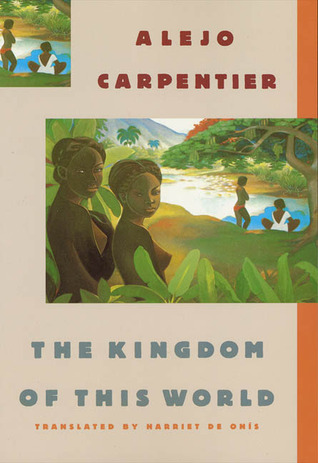20. yuzyil Latin Amerika edebiyatinin onde gelen roman yazarlarindan Kubali (Fransiz) roman ve deneme yazari ve muzikolog Alejo Carpentierin olum yildonumu (24 Nisan 1980)
Insaat bir karinca yuvasi gibiydi. Bu tuglalar, her mevsim ve her yil hic ara vermeden kaleye tasiniyordu. Bir sure sonra Ti Noel, bu calismanin on iki yildan fazla bir zamandir surdugunu, tum Kuzey Ovasi halkinin bu iste calismasi icin zor kullanilarak seferber edildigini ogrendi. Buna karsi girisilen her turlu gosteri kanli bicimde bastirilmisti. Hic duraklamadan bir asagi bir yukari yuruyen zenci, Sans-Soucinin oda orkestralarinin, uniformalardaki gorkemin ve bahcelerde budanmis simsirler arasinda suslu puslu kaideleri uzerinde guneste isinan ciplak beyaz heykellerinin, Bay Lenormand de Mézynin konutunda surdurdugu kolelikten daha igrenc bir kolelik sonucu ortaya ciktigini dusunmeye basladi. Hatta buradaki durum daha da beterdi. Cunku kendisi gibi siyah, kivircik ve yassi burunlu, kendisi gibi damgali bir zenciden dayak yemenin derin ezikligi icindeydi. Bu durum, bir evdeki cocuklarin anne ve babalarini, torunlarin buyukanne ve buyukbabalarini, gelinlerin kayinvalidelerini dovmelerine benziyordu. Eskiden, buyuk ciftlik sahipleri kolelerini bir sakarlik yapmadikca oldurmemeye ozen gosterirlerdi. Cunku olenin yerine baskasini almak pahaliya mal olurdu. Oysa burada, bir zencinin olumu devlet hazinesi icin bir deger tasimiyordu: Cocuk doguracak zenci kadinlar oldukca - ki vardi ve her zaman da olacaktir- Bonnet de lÉvéque Daginin tepesine tugla tasiyacak isciler hic eksik olmayacakti. Bu Dunyanin Kralligi
Each with a brick to be left at the foot of the fortress, which rising like an ant-hill, thanks to those grains of fired clay borne to it unceasingly, from season to season, from year's end to year's end. Ti Noel soon learned that this had been going on for more than twelve years, and that the entire population of the North had been drafted for this incredible task. Every protest had been silenced in blood.Walking, walking, up and down, down and up, the Negro began to think that the chamber music orchestras of San Souci, the splendor of the uniforms, and the statues of naked white women soaking up the sun on their scrolled pedestals among the sculptured boxwood hedging the flowerbeds were all the product of a slavery as abominable as that he had known on the plantation of M. Lenormand de Mézy. Even worse, for there was a limitless affront in being beaten by a Negro as black as oneself, as thick-lipped and wooly-headed, as flat-nosed; as low-born; perhaps branded, too. It was as though, in the same family, the children were to beat the parents, the grandson the grandmother, the daughters-in-law the mothers who cooked for them. Besides, in other days, the colonists--except when they had lost their heads--had been careful not to kill their slaves, for dead slaves were money out of their pockets. Whereas here the death of a slave was no drain on the public funds. As long as there were black women to bear their children--and there always had been and there always would be--there would never be a dearth of workers to carry bricks to the summit of Le Bonnet de l'Évêque.







 Alıntı yaparak yanıtla
Alıntı yaparak yanıtla












Yer İmleri